The Bajau in their canoes, or lepa-lepa. Photo: Adam Docker.
“First impressions were of awe,” says photographer Adam Docker. “You feel like you have arrived in some long lost tribe only ever seen on [BBC documentary] Planet Earth or read about in a Jules Verne book.” Docker, who took these stunning photographs, recounts his first visit to a Bajau sea gypsy village on the island of Borneo, not far from the town of Semporna in the Malaysian state of Sabah. Surrounded by crystal-clear turquoise water, coral, and dazzling sea life, the cluster of huts on stilts perched out on the ocean look astounding.
Bajau huts on stilts. Photo: Adam Docker.
Docker came to this village as part of a UK Channel 5 team making a documentary on the plight of gypsies worldwide. Fortunately, getting to the village wasn’t much of an ordeal. “The production company had arranged fixers for our whole shoot in Borneo,” says Docker. “So when we arrived in Semporna we had two boats ready to take the 11-man crew with all the kit to the islands where the Bajau live. It was a pleasant hour-long trip on the water. The Bajau live on houses on stilts, which are situated just off an island in one of the richest reefs in the world.”
A colourful washing line. Photo: Adam Docker.
The reefs to which Docker is referring are part of the Coral Triangle, which is an ecologically valuable area between Papua New Guinea, the Philippines, the Solomon Islands, Indonesia, Malaysia, and Timor-Leste. It's also an area teeming with fish and coral and is recognized as the global centre of marine biodiversity - earning it the nickname “The Amazon of the Seas”. Over 120 million people are sustained by this incredible part of the ocean, including the Bajau, who rely on fishing for sustenance and income.
A young boy paddles a lepa-lepa while another dives. Photo: Adam Docker.
When it comes to fishing, the Bajau are noted for their free-diving skills and can hold their breath for up to five minutes, swimming down to depths of around 66 feet (20 m)! This amazing ability is something they train for from childhood. But after all, the Bajau are practically born at sea.
Setting fish out to dry. Photo: Adam Docker.
The ability to hold their breath for long periods of time is not all that the watery upbringing of the Bajau endows them with. Their eyes also become adapted to seeing underwater twice as well as the rest of ours, which makes it easier for them to spot and target fast-moving fish.
The Bajau live close to the shore of a small uninhabited island.
Photo: Adam Docker.
One part of the body that doesn’t cope so well with all the diving is the eardrums, which the Bajau often rupture (sometimes intentionally) at an early age. They’re also not immune to diving accidents, and occasionally Bajau divers die from the bends. That said, their slim, muscled frames do offer them some protection. “This type of freediving - repeatedly diving to depths of 10 to 20 m [32 to 66 feet] - carries the greatest risk of decompression sickness,” says free-diving instructor Emma Farrell. “But you are less likely to get the bends if you are lean, or very well-hydrated.”
The children would stare at outsiders in amazement. Photo: Adam Docker.
Nobody knows for sure where the Bajau came from, or why they first took to their aquatic lifestyle. Two differing theories suggest that they may originate from the Philippines or Johor in Malaysia, while a third theory claims that they came from the Riau Archipelago islands of Indonesia. Some Bajau believe they descended from royal guards of the Johor Sultanate who took to the seas. Yet wherever they derive from, the Bajau have been living a nomadic, ocean-dwelling life for centuries.
Women cover their faces in a paste made from leaves crushed with tapioca
and water to prevent them from tanning. Photo: Adam Docker.
“When you first arrive there it is like going back in time,” says Docker. “You can imagine how man must have lived long ago and how we can adapt to living in the strangest places. The production had organized us to film two families in the small village.”
Spearfishing in the crystal clear waters. Photo: Adam Docker.
“The Bajau collect clams and hunt for small fish in the beautiful surrounding waters and then travel the one-hour journey to the market in Semporna where they sell their wares,” Docker explains. “We followed one of the ladies with her week’s collection of clams. She made £7 [$11]. The families we filmed were so friendly. In fact, everyone there was friendly and all the crew were constantly snapping away on their cameras. It was hard not to be invasive. They looked so fascinating.”
The Bajau zip around on little canoes from one hut to another. Photo: Adam Docker.
Among the Bajau there are a number of different sub-groups, which vary according to where the people come from or where they live. The Bajau in these photographs are Ubian and are thought to be from the island of South Ubian, which is in Tawi-Tawi in the Philippines. This group makes up the largest sub-group of Bajau in the state of Sabah.
A young girl washes her hair. Photo: Adam Docker.
Culture and religion can also vary within the different Bajau sub-groups. A small group of them are Christian but most are Sunni Muslim. Others still hold to ancient animistic beliefs and ancestor worship. And some, like the Ubian, who still live so much at sea, follow a mixture of Islam and folklore, worshiping local sea spirits, or “jinn” as they are called in the Islamic vocabulary.
The Ubian Bajau spend almost their whole lives at sea. Photo: Adam Docker.
Docker spent a night in one of the Bajau huts, and it sounds like a memorable experience. “I didn't have a mattress, it was on the hard wooden floorboards,” he tells us. “It was a full moon. I didn't sleep a wink. The night was spent watching hundreds of cockroaches come out from between the floorboards and flicking them away from my body. There were strange animal noises emanating from all the different huts as well! I heard the sound of wailing cats and what seemed like drowning dogs. You could also hear dogs chasing monkeys on the island opposite.”
A lonely gypsy paddles out to sea. Photo: Adam Docker.
“The village was only an hour away from civilization, but it definitely felt like miles away from the real world,” Docker recalls. “The Bajau are a simple folk and their diet consists of fish, tapioca and bananas. The tapioca is also used as a sunscreen, which is mixed with water and dried leaves. When I first saw the ladies with the cream on their faces, I wondered if it was a tribal tradition. But it’s just to protect their amazing skin and their beautiful photogenic features.”
Docker found an amazing photo opportunity wherever he turned.
Photo: Adam Docker.
Unfortunately, as a minority group, the Bajau near Semporna often face discrimination from the local Malay majority. “Selling their clams and fish at the market in Semporna risks [them] a fine or imprisonment from the local police as they don't have any legal papers and are an unwanted people,” says Docker. The government has been trying to settle the nomads in their efforts to stamp out sea piracy in the area. And large fishing companies also plunder the rich ecosystem in which the Bajau rely, threatening their way of life.
The village as seen from the shore. Photo: Adam Docker.
“Their success is their simplicity and living in those huts,” says Docker. “It draws in the tourists and the revenue. It won't be long before they will become a tourist trap. Let's hope not. There is nothing like visiting an innocent tribe.”
The photographer was touched by his time with the Bajau people: “In today's homogenized world I feel so privileged to have experienced this,” he says. We thank Adam Docker for sharing his photographs and experiences with us.
Article Sources:
6. The Bajau
Top image: Bajau Sea Gypsies
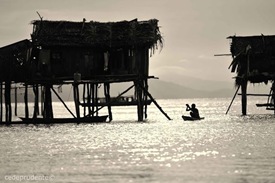
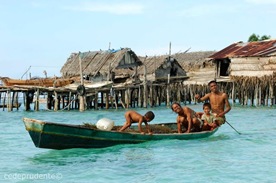
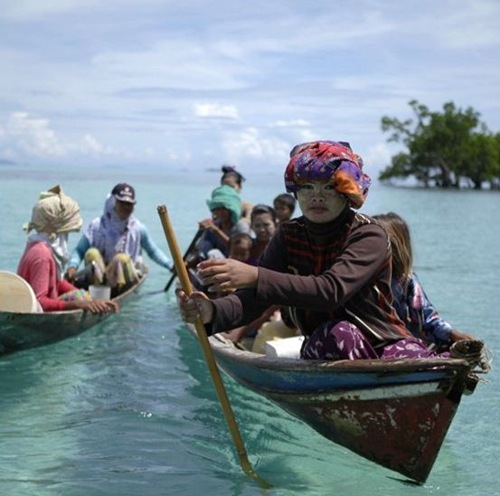

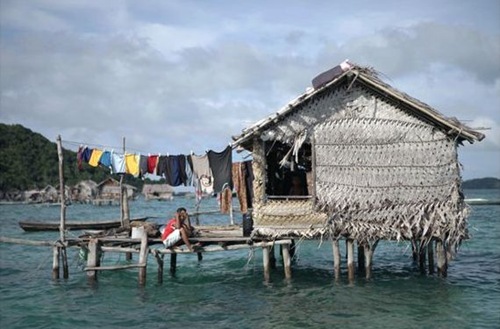
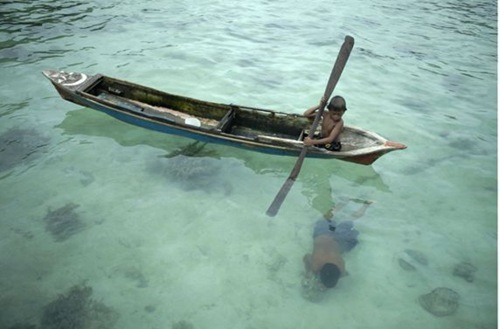
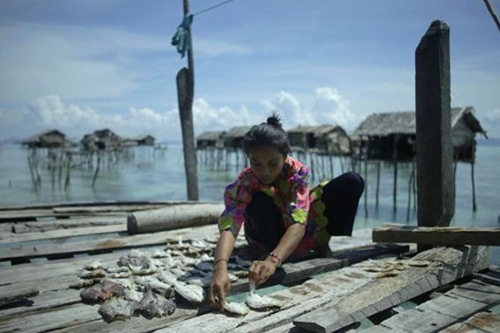

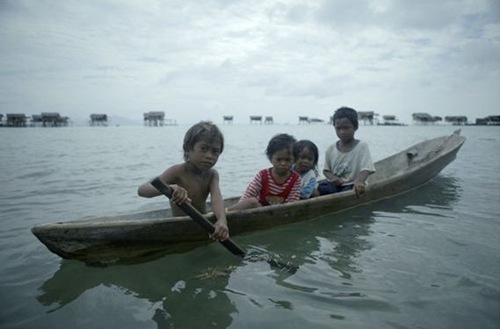
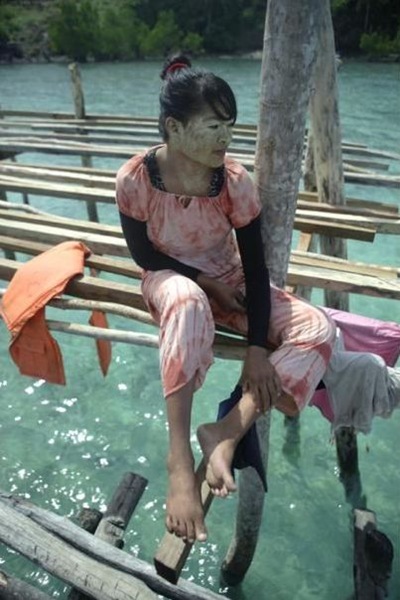


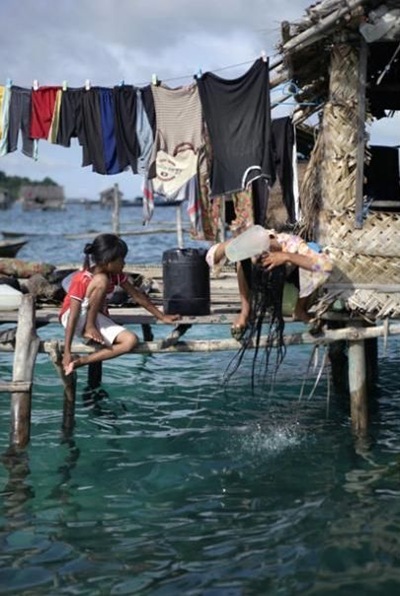
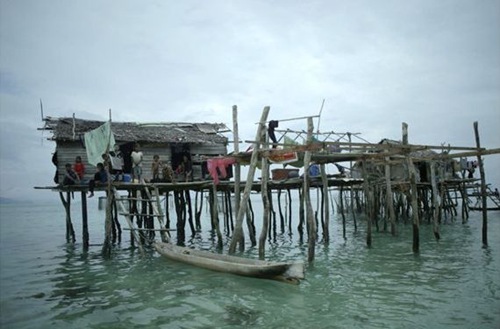
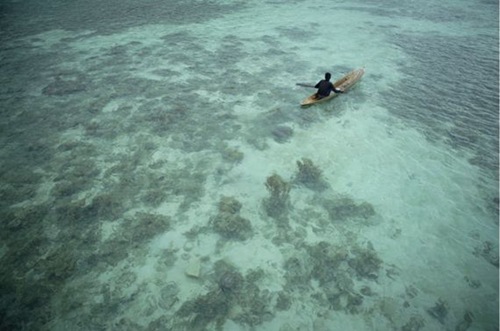
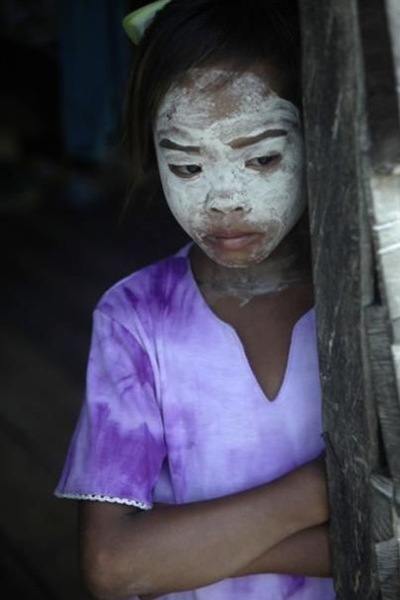
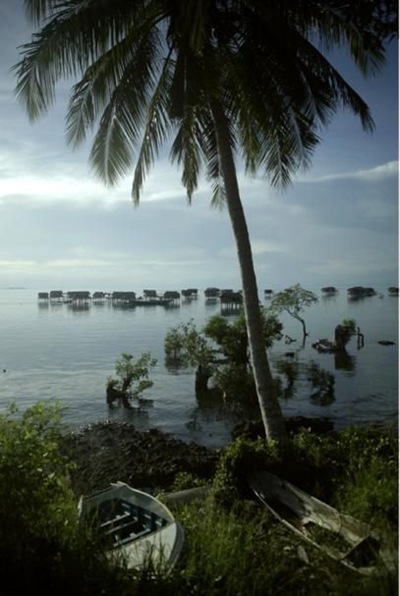
Sdr Alizul,
ReplyDeleteInteresting article.
But I strongly suggest you and readers read the following two books that say that the Bajaus belong to the Large Family of Malays that originate in these Gugusan Pulau Pulau Melayu or the Malay Archipelago many thousands of years ago, family of Malays who were seafaring, skilled in boat/ ship building and navigation, having travelled to, reached and settled beyond the Archipelago - Madagascar, South Africa, the Christmas and Easter Islands of Australia, New Zealand, Vietnam, Cambodia, Taiwan, the Malayo-Polynesian and Pacific Islands as far as Hawaii, that now total some 350 million people:
1. The Malay Civilization, 2007
2. Tamadun Alam Melayu, 2009
Published by The Historical Society of Malaysia (established since the British colonial times), available at their own 5-storey building Wisma Sejarah, opposite Institute Jantung Negara, Jalan Tun A Razak, Kuala Lumpur.
Sdr Anon,
DeleteI've already read Mohd Arof Ishak's book, The Malay Civilization, and I'm aware about the Bajaus from his book and the writings of other alternative Malay historians (such as Srikandi).
This post simply reproduces an article which expresses the views of the original writer who, in turn, recounts the experience of photographer Adam Docker and the UK Channel 5 team in the Bajau settlement. The story is not mine.
I reproduce it with the hope that it generates readers' comments and debate, as it tells us about the history of the Malays as one of the most world's most renowned seafarers - a history which seems to be overlooked or given scant attention by many (mostly mainstream) historians. The Malays are not called the "Vikings of the East" for nothing. Come to think of it, with our history spanning thousands of years, possibly preceding the Vikings, shouldn't the Vikings be called "Malays of the West" instead?!
Thank you for your comments.
Alizul